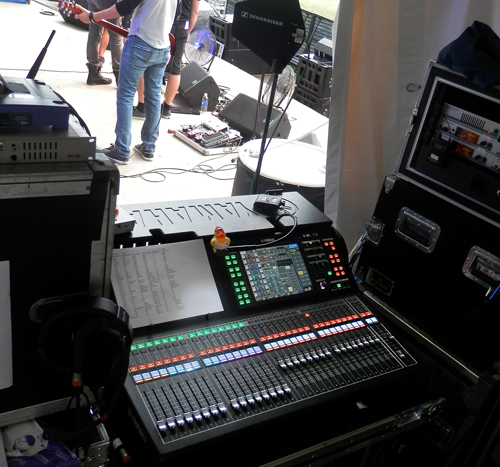
For bass, two stages is often good: a more aggressive one with a later attack to allow the transient to come through, then a milder one with a faster attack to keep the transient somewhat in check. This combination has been used on thousands of hit records, by the way.
For the overall mix, be gentle with it! And please, please use a quality compressor, especially for the mix.
Sometimes you can get away with a mediocre unit for bass (unless the bass player finds out). But for the mix bus, it needs to be high-end stuff. Your ears will thank you for it.
One last word about dynamics: if you expect that the music will have room to breath, and that dynamics are required for a particular genre, then the system must have enough headroom. And remember that 3 dB more means double the power…
For The Last Time…
It appears that issues of Time of Arrival (TOA) are fairly well understood in the macro sense. System designers using zones or distributed loudspeakers understand the need to keep all of them aligned from the origin point (usually the band or stage).
But where I don’t see TOA understood as well is in the micro realm. This is the difference in time between instruments on the stage or between the vocalist and the stage lip loudspeakers.
My main concern with this is what is known as “precedence.” Our ears tend to translate the first arrival as the original source.
Perception & Reality
But what if the closest source to a particular listener is a loudspeaker? The listener will perceive that loudspeaker as being the original source.
Frankly, this is a very common occurrence and is often unavoidable. The position of the loudspeakers relative to the audience may necessitate that some people hear some of the loudspeakers first.
Even if you have a great sounding mix and you’re working for a great artist, these things should still be of concern. By simply delaying the lip loudspeakers or front fills so that the singer (or lecture speaker for that matter) arrives first acoustically, the illusion will be that all the sound is coming from that person.
When I first started working with delays on the mains, I was amazed how much more clarity could be achieved by aligning the system back to the drums.
From then on, I typically delayed the mains by about 10 to 20 mS depending on the size of the stage and how far back the drums were from the front line. It was a subtle thing in some ways, but I came to rely on it.
Just Blowin’ In The Wind
All of this is just my own personal tips and tricks for good sound. You probably have your own techniques – and you should.
But I hope what I’m imparting gives you some new ideas and some new things to try. Ultimately, good sound is up to all of us.
I continue to maintain hope that overall sound at shows, lectures, concerts, plays, and festivals will improve. Frankly there’s a lot of room for improvement.
Let’s make it happen!
